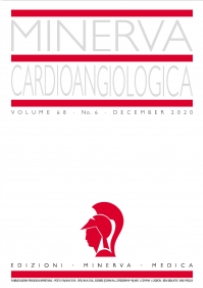Bosio A1, Borchini M2, Pecci C2, Donatucci B1, Montano M1, Iellamo F1,3.
1, Specialization School in Sports Medicine and Exercise, Tor Vergata University, Rome, Italy; 2, Mapei Sport Research Centre, Olgiate Olona, VA, Italy; 3, IRCCS San Raffaele Pisana Institute, Rome, Italy

Abstract
Background: Exercise test (ET) is a validated tool for the identification of coronary artery disease (CAD) even among athletes. A “cut-off” of 85% HRmax is often chosen as an “end point” although it has been shown that this percentage is far from a maximal effort and might be insufficient to evaluate athletes who often reach HRs close to 100% of the theoretical HRmax during sport activity. The aim of this study was to identify the percentage of theoretical HRmax (% HRmax) at which ST segment depression due to a coronary insufficiency on ECG at ET became significant and how much this value would be different from the “cut-off” of 85% of the theoretical HRmax.
Methods: Forty-two male competitive athletes of three different sport disciplines (58±7.9 years) tested positive during ET at HRmax greater than 85% with ST depression ≥2 mm from V1 to V6 and / or ≥1 mm from D1 to aVf at J point + 80 ms, were included. ECG traces recorded at 85% of HRmax, were compared with those recorded at the percentage of HRmax corresponding to the significant ST depression (%HRmaxST).
Results: % HRmax at which the ST depression become significant was 93.4±3.4% with a Δ% of + 8.4% compared to 85%. ST segment depression at peak exercise on precordial leads was significantly different from that at 85% HRmax (P<0.0001). TC coronary scan confirmed CAD.
Conclusions: The cut off of 85% HRmax is insufficient to identify signs of reduced coronary reserve in competitive athletes.
Minerva Cardioangiol. 2020 Apr;
PMID: 32429625 DOI: 10.23736/S0026-4725.20.05172-5